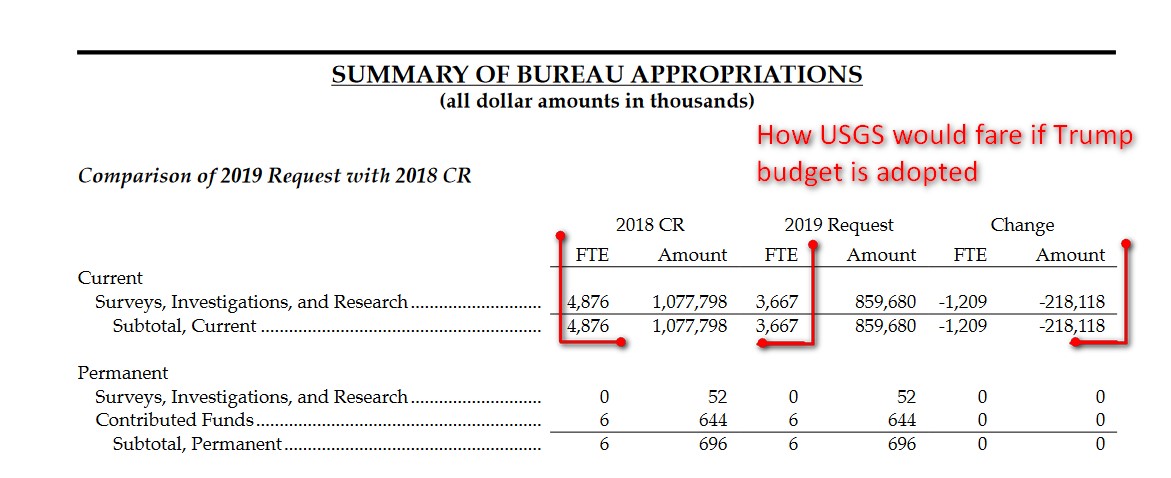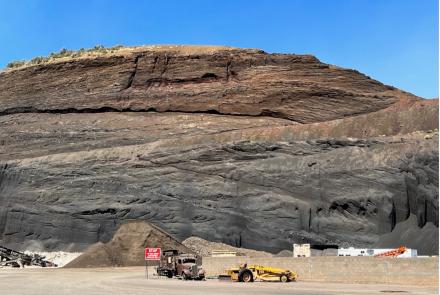US Geological Survey's Proposed 2019 Budget Takes a Shellacking
If President Trump’s 2019 budget becomes law, the US Geological Survey budget will fall 20% to $859.7 million. Full-time employees, in turn, will be reduced from the current 4,876 to 3,677; a diminution of ~25% (Figure 1).

It’s hard to imagine that such a dramatic decrease in financial and human resources would not adversely impact the USGS' mission to ‘deliver integrated scientific understanding and forecasts of natural systems to improve the Nation’s economic well-being, reduce societal risks to hazards, and support and inform natural resource stewardship.’
The breadth and diversity of USGS programs makes it cumbersome to list all of the impacted programs, but here is a taste of the impacts; all dollar amounts are reported in thousands. For a full accounting, please visit the USGS Funding report.
- Ecosystems -62,516
- Land Resources +103,242
- Climate & Land Use -148,261
- Energy & Mineral Resources +11,535
- Env. Health -21,101
- Natural Hazards -26,726
- Water Resources -48,374
- Core Science Systems (includes mapping & NCGMP) -22,984
USGS Program Overview
“The USGS was founded by an Act of Congress in 1879. The USGS delivers information to identify energy and mineral resources, find and protect groundwater, predict earthquake damage, identify hazards, guide transportation planning, inform managers of natural resources, and improve quality of life and economic vitality. The Bureau is responsible for monitoring and notification of earthquakes, volcanic activity, and landslides in the United States and collaborates with partners to improve hazard monitoring, explore vulnerable interdependencies, enhance emergency response, and speed disaster recovery.”
M. Conway (2/13/2018)





